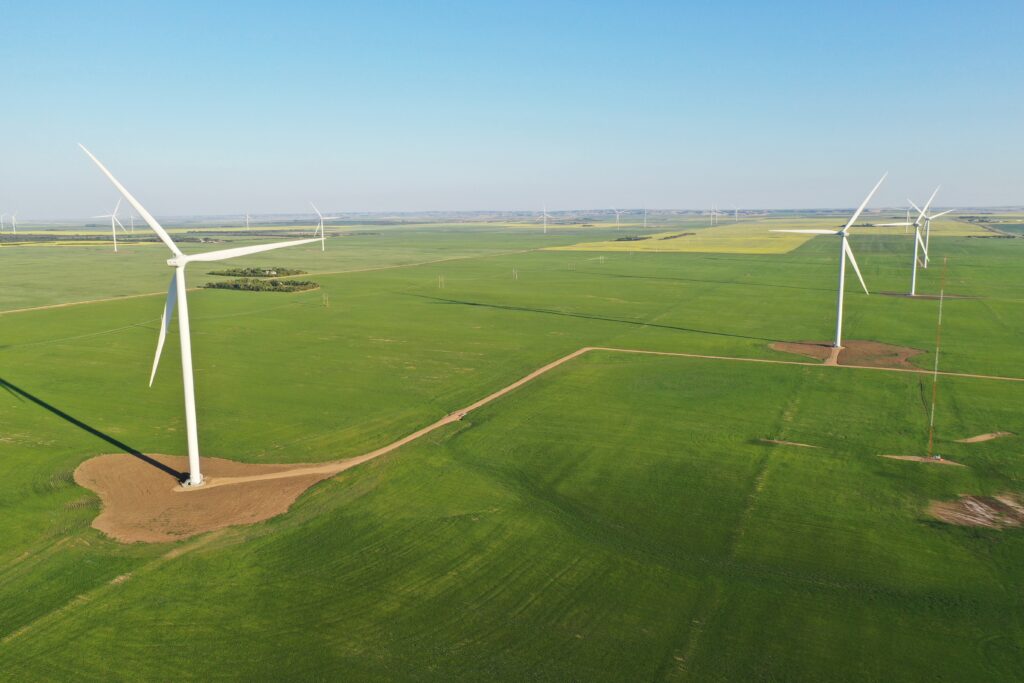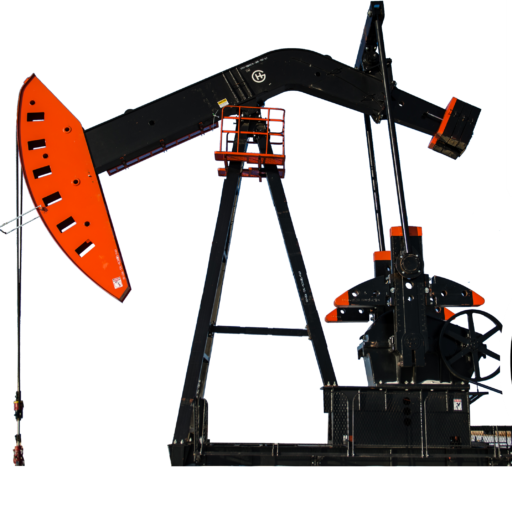David Yager is a long-time oilpatch writer and executive. Yager’s copy is provided free of charge by the Canadian Energy Centre Ltd.

Wind turbines near Assiniboia, SK, Photo by Brian Zinchuk
With energy costs rising globally and the western world trying to stop buying fossil fuels from Russia, accelerating the switch to renewables continues to be pitched by some as the best solution.
Prior to 2021, there was great excitement about the falling costs of renewable energy. Much was written about how solar power was now the cheapest electricity available, and how this would ensure continued decarbonization of the global energy complex.
But this was based on current, not future input costs. With 85 per cent of the world’s primary energy still derived from fossil fuels, this affects the cost of everything. Including its replacements.
While the output of renewables may be low carbon, its input costs are not.
Energy cost of energy
The term is the “energy cost of energy.” The world must start paying attention.
Energy consultancy Goehring & Rozencwajg released its 2021 Q4 Natural Resource Commentary the day before Russia invaded Ukraine on February 24.
Titled “The Distortions of Cheap Energy,” it focused on how energy decisions made in the pre-COVID era were becoming impossible to replicate under current market conditions.
One of the long-standing arguments for replacing fossil fuels is that the future cost of climate damage caused by not decarbonizing is so huge that what appears to be expensive today is an investment in the future.
But money matters, and the cost of energy and capital is going up. Interest rates are rising because of inflation. Massive public debt is capping government’s ability to support the economy. Few people can afford to pay more for anything.
That includes energy.
Record drop in energy prices
The authors wrote, “The past decade has seen a material acceleration in renewable adoption. At the same time, from 2010 to 2020, [the cost of] every form of primary energy (oil, natural gas, coal, uranium) fell by nearly 90% from peak to trough. We have gone back for 150 years and cannot find a similar ten-year drop. According to Sydney Homer, the 2010s also witnessed the lowest interest rates in at least 4,000 years. The 2010s were characterized by cheap, abundant energy and cheap, abundant capital.”
- 0100 Turnbull Project Manager0100 Turnbull Project Manager
- 0099 Mryglod Steel 1080p0099 Mryglod Steel 1080p
- 0097 Eagle Sky Ventures LTD0097 Eagle Sky Ventures LTD
- 0095 Fast Trucking nearly 70 years good at it0095 Fast Trucking nearly 70 years good at it
- 0053 Kingston Midstream Westspur Alameda Click Before You Dig0053 Kingston Midstream Westspur Alameda Click Before You Dig
- 0092 Turnbull projects big and small0092 Turnbull projects big and small
- 0046 City of Estevan This is Estevan Teaser0046 City of Estevan This is Estevan Teaser
- 0087 Lori Carr Coal Expansion0087 Lori Carr Coal Expansion
- 0077 Caprice Resources Stand Up For Free Speech0077 Caprice Resources Stand Up For Free Speech
- 0076 Latus only0076 Latus only
- 0061 SIMSA 2024 For Sask Buy Sask0061 SIMSA 2024 For Sask Buy Sask
- 0055 Smart Power Be Smart with your Power office0055 Smart Power Be Smart with your Power office
- 0051 JML Hiring Pumpjack assembly0051 JML Hiring Pumpjack assembly
- 0049 Scotsburn Dental soft guitar0049 Scotsburn Dental soft guitar
- 0041 DEEP Since 2018 now we are going to build0041 DEEP Since 2018 now we are going to build
- 0032 IWS Summer hiring rock trailer music
- 0022 Grimes winter hiring
- 0021 OSY Rentals S8 Promo
- 0018 IWS Hiring Royal Summer
- 0013 Panther Drilling PO ad 03 top drive rigs
- 0006 JK Junior
- 0002 gilliss casing services0002 gilliss casing services
- 9002 Pipeline Online 30 sec EBEX9002 Pipeline Online 30 sec EBEX
- 9001
Which is great. The costs of renewables plunged. The levelized cost of energy (LCOE) for solar (80%) and wind (40%) showed promising declines.
But extremely attractive input costs were overlooked. “Amazingly, no one has connected declining energy costs and cheap capital with the proliferation over the last decade of energy-hungry, capital-intensive projects such as wind, solar, and lithium-ion battery manufacturing. We think the two are fundamentally linked…Between 2010 and 2020, energy prices fell from approximately $14 per GJ ($80 per oil-equivalent barrel) to $2.80 per GJ ($20 per oil-equivalent barrel).”
For solar, this meant, “The total direct cost of energy fell by over $1,000 per installed kw—from $1,400 to less than $300, representing more than 10 cents of the 33-cent total LCOE drop. The assumed cost of capital fell by one-third from 7.5% to 5.0%, resulting in another 5 cent drop.”
Lower renewables costs tied to oil and gas
While suppliers took credit for technological advances and efficiency gains, the report disagrees, stating that “20-25 cents of the 33-cent total reduction in solar costs are directly attributable to lower energy prices, lower costs of capital, and one-time distortions in the polysilicon markets. Between 60-75% of the cost saving attributed to the so-called learning curve can be explained away by these three factors.”
Wind was similar. “Between 2010 and 2020, the LCOE fell by 9 cents to 4.5 cents per kwh. We estimate that lower energy costs and capital costs represented 50%-70% of the cost savings. We suspect our analysis could be too conservative.”
The report also compared the energy equivalency of wind turbines to oil.
“Consider the materials needed for a 1.5 MW windmill. The foundation alone requires 40 tonnes of steel and 600 tonnes of concrete. The tower requires another 150 tonnes of steel while the generator requires 9 tonnes of copper, the nacelle requires 45 tonnes of steel, and the rotors require 15 tonnes of carbon fiber. Since wind power is intermittent, a 1.5 MW windmill is expected to operate at a load factor of only 30%. That means a 1.5 MW windmill will produce 4 GWH of power per year over its 20-year assumed life.”
On an oil equivalent basis, this windmill would produce the same energy as 116,000 barrels of oil, about 10% of the best wells in the U.S. Permian Basin. Put another way, it would take 10, 100-metre-tall windmills to produce the same amount of energy as a single oil well that yielded one million recoverable barrels.
And the oil’s energy would be continuous. As the world has learned the hard way, the windmill would require backup power. Which increases the cost.
Rising costs for renewables
Goehring & Rozencwajg warn about rising costs for renewables. “If our models are correct and both energy prices and capital costs rise going forward, the impact on renewable energy will be dramatic. We calculate that solar costs could easily rise from 7 cents to 20 cents per kwh while wind costs could rise from 4.5 cents to 6.0 cents per kwh. In both cases, nearly a decade of cost savings would be wiped out.”
They could be wrong. Nobody wants to read this. I don’t want to write it.
But the extraordinarily good times that ended with the COVID-19 pandemic lockdown and made worse by war in Eastern Europe have changed everything, including the energy transition.
More than ever, the world must replace energy politics with energy science and economics.
David Yager is an oilfield service executive, oil and gas writer, and energy policy analyst. He is author of From Miracle to Menace – Alberta, A Carbon Story. Yager’s column is provided by the Canadian Energy Centre Ltd.
- 0100 Turnbull Project Manager0100 Turnbull Project Manager
- 0099 Mryglod Steel 1080p0099 Mryglod Steel 1080p
- 0097 Eagle Sky Ventures LTD0097 Eagle Sky Ventures LTD
- 0095 Fast Trucking nearly 70 years good at it0095 Fast Trucking nearly 70 years good at it
- 0053 Kingston Midstream Westspur Alameda Click Before You Dig0053 Kingston Midstream Westspur Alameda Click Before You Dig
- 0092 Turnbull projects big and small0092 Turnbull projects big and small
- 0046 City of Estevan This is Estevan Teaser0046 City of Estevan This is Estevan Teaser
- 0087 Lori Carr Coal Expansion0087 Lori Carr Coal Expansion
- 0077 Caprice Resources Stand Up For Free Speech0077 Caprice Resources Stand Up For Free Speech
- 0076 Latus only0076 Latus only
- 0061 SIMSA 2024 For Sask Buy Sask0061 SIMSA 2024 For Sask Buy Sask
- 0055 Smart Power Be Smart with your Power office0055 Smart Power Be Smart with your Power office
- 0051 JML Hiring Pumpjack assembly0051 JML Hiring Pumpjack assembly
- 0049 Scotsburn Dental soft guitar0049 Scotsburn Dental soft guitar
- 0041 DEEP Since 2018 now we are going to build0041 DEEP Since 2018 now we are going to build
- 0032 IWS Summer hiring rock trailer music
- 0022 Grimes winter hiring
- 0021 OSY Rentals S8 Promo
- 0018 IWS Hiring Royal Summer
- 0013 Panther Drilling PO ad 03 top drive rigs
- 0006 JK Junior
- 0002 gilliss casing services0002 gilliss casing services
- 9002 Pipeline Online 30 sec EBEX9002 Pipeline Online 30 sec EBEX
- 9001
